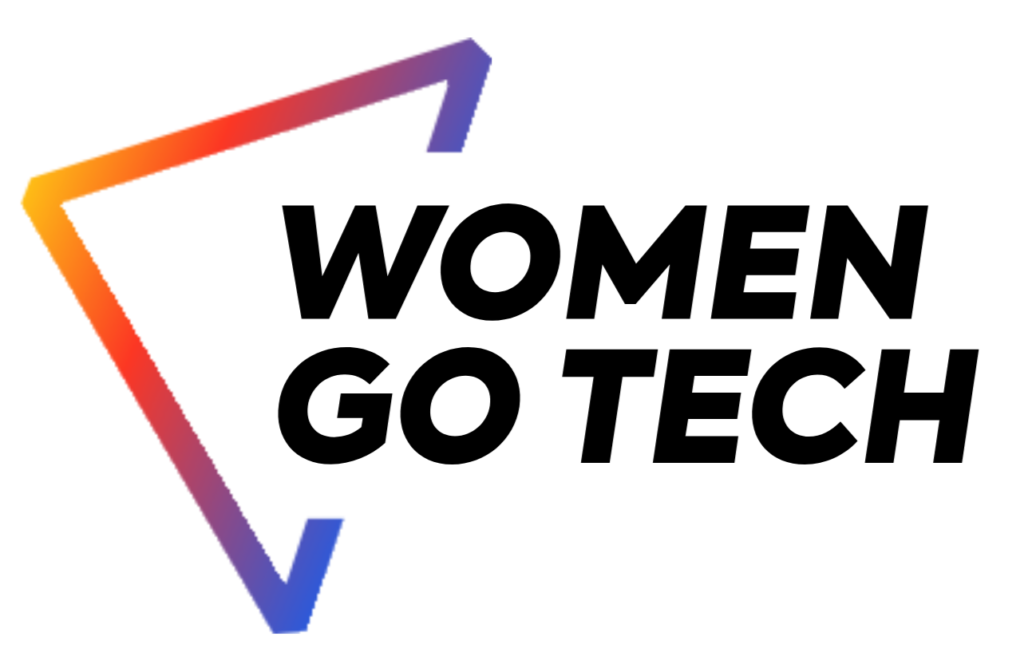Portfolio Project powered by Adform
Introduction to Hybrid Project Management: Managing a Feature Release

Adform is one of the top international providers of programmatic advertising software.
Industry Context
Programmatic Advertising is the use of automated technology for media buying. The term “programmatic” relates to how ads are bought and sold in the advertising space.
Programmatic Advertising differs from more traditional media buying methods in its use of automation. It analyzes many user signals to ensure that ads serve the right person, in the right place, at the right time, and price. As opposed to traditional Digital Advertising methods, Programmatic Advertising automates the decision-making process of ad placement without having to negotiate prices or placements manually.
According to a study published in 2024*, the global Programmatic Advertising market was valued at USD 21.1 Billion in 2023 and is projected to reach USD 120.7 Billion by 2030.
Feature Context
Dynamic creative optimization, or DCO, is a programmatic advertising feature that allows advertisers to create hyper-personalized ads based on real-time data. DCO is a powerful tool that can help marketers create more relevant, impactful, and effective ads.
*Market Digits, 2024, Programmatic Advertising Market by Product Type (Real-Time Bidding, Private Marketplace, Programmatic guaranteed, Others), Device (Mobile, Computers, Others), Advertising Channel (display ads, video ads, social ads, audio ads, native ads, and digital out-of-home, Others) and Region – Global Forecast to – Forecast 2024-2032.
Adform is set to launch a new feature called DCO Pro, designed to support video ads and more advanced advertising campaigns. You have been assigned as the Project Manager to lead this project to completion. In addition to the new feature development, the project scope also includes:
- the creation and execution of a marketing plan. It should outline the key messages, communication channels, and means for promoting the new feature;
- the internal readiness for the release. Internal readiness should be ensured through training and preparation of feature documentation.
As the Project Manager of this release, you have been asked by your Project Sponsor Alison Green to prepare a project schedule and outline when she could expect the DCO Pro release to take place. The development of DCO Pro is planned to start on May 1st, 2024. Alison expects the project schedule to be presented in a Gantt chart, with a clear view of all project deliverables, dependencies, and milestones. Alison needs the information about the DCO Pro release date as soon as possible because:
- it will determine the resource allocation across Adform’s commercial and development teams for the upcoming months;
- it will help her decide what revenue increase to commit to senior stakeholders in 2024- 2025. The DCO Pro release date will determine the project benefit realization timeline.
Task Inputs
Project Scope
In scope:
- Feature development:
- Backend architecture refactoring
- Database optimization
- API development for DCO Pro
- UI design and prototyping
- Frontend component development
- Integration and testing
- Hypercare period after the release
- Marketing:
- Creation and execution of the marketing plan
- Preparation of sales enablement materials
- Internal readiness:
- Creation and execution of the training plan
- Feature documentation
- Project retrospective:
- Documentation of lessons learned from key project contributors
Out of scope:
- Non-DCO Pro-related features:
- Any features not directly related to DCO Pro enhancement
- Infrastructure changes unrelated to DCO Pro:
- Major infrastructure changes not directly tied to the DCO Pro release
- Third-party integrations:
- Integrations with third-party platforms or services beyond what is necessary for DCO Pro functionality
- Long-term feature maintenance and support:
- Ongoing maintenance and support after the hypercare period
- Benefit realization for 2024 and beyond:
- The tracking of revenue earned from the DCO Pro release
Dependencies
| Deliverables | Dependencies |
| Backend development depends on: | * Frontend UI design and prototyping * Database design and implementation * API design and development |
| Frontend UI development depends on: | * Backend development (for API integration) * Design assets from UI/UX Team * QA testing for each component |
| DCO Pro marketing plan depends on: | * Preparation of marketing materials and channels * Sales enablement material preparation |
| Internal readiness depends on: | * Feature documentation readiness * Sales enablement material preparation * Internal training completion by all relevant sales and customer support teams before the release |
| DCO Pro benefit realization depends on: | * Release date and quality * Internal readiness * Marketing plan execution |
Relevant Information About Participating Teams
- Backend Development Team:
- Team Size: 5 developers
- Capacity: 6 story points per developer per sprint
- Epic Estimations:
- Backend architecture refactoring: 20 story points
- Database optimization: 15 story points
- API development for DCO Pro: 30 story points
- Integration testing: 25 story points
- Frontend UI Development Team:
- Team Size: 4 developers
- Capacity: 5 story points per developer per sprint
- Epic Estimations:
- UI design and prototyping: 15 story points
- Frontend component development: 40 story points
- Integration UI testing: 20 story points
- QA Team (shared across backend and frontend):
- Team Size: 3 testers
- Capacity: 8 story points per tester per sprint
- Epic Estimations:
- Test case design and preparation: 10 story points
- End-to-end testing: 40 story points
- Marketing Team:
- Team Size: 3 marketers
- Capacity: 10 story points per marketer per sprint
- Epic Estimations:
- Deciding key messages and communication channels: 15 story points
- Preparation of the marketing plan: 20 story points
- Promotional material creation: 20 story points
- Internal Training Team:
- Team Size: 2 training specialists
- Capacity: 12 story points per specialist per sprint
- Epic Estimations:
- Preparation of training materials: 15 story points
- Feature documentation: 10 story points
- Training sessions: 15 story points
Known Risks
- Release timing:
- Releasing a feature during summer may be counter-productive due to reduced user activity and engagement. Consideration should be given to the timing to maximize the release impact;
- Technical risks:
- Unexpected complexities in backend architecture refactoring may delay subsequent development tasks;
- Integration challenges between frontend and backend components may arise, leading to delays in testing and deployment;
- Resource Constraints:
- Availability of participating teams might fluctuate due to other ongoing projects or unforeseen circumstances, affecting project timelines;
- Market Adoption:
- The market may not respond as anticipated to the new feature, impacting the benefit realization.
Task Outputs
- Project schedule (Gantt chart) in Microsoft Excel (or similar tool) with project milestones and a recommended release date. Gantt chart should outline the project tasks, durations, start and end dates, dependencies, and milestones;
- Risk log evaluating the likelihood, impact, and risk mitigation strategies of known risks;
- A Microsoft PowerPoint (or similar tool) presentation for the Project Sponsor, showcasing a summary of the project schedule, recommended release date, risk log, and decision needs.
Optional task: If you would like to deepen your knowledge about project initiation, experiment with creating a Project Charter for the DCO Pro release. You can find Project Charter examples and templates on the Internet. Make sure your Project Charter includes project objectives, key stakeholders, and project success criteria.
1. The main goal of this task is to help you experience what it is like to plan a project by merging several project management methodologies. In this case, scrum and waterfall methodologies. Most companies do not rely on a single methodology and use a hybrid approach to plan their commitments and strategy while maintaining agility in the delivery. This exercise is a good representation of how project planning happens in real life and what demands a Project Manager may expect from a Project Sponsor.
2. Internal readiness: make sure your schedule reflects both training preparation and execution activities. It should take at least two weeks for people to complete the internal training.
3. Hypercare period: hypercare is the period of heightened customer support and attention immediately after a major change in operations. The hypercare period should take around one sprint after the release and involve development and customer support teams.
4. Uncertainty: Be careful to overpromise and underdeliver. While estimating the project schedule and release date, consider adding buffers to accommodate known risks.
5. Timing and seasonality: When estimating the timing of the release, think about how you can maximize user engagement and minimize disruption. Take factors like holidays, seasonality, and industry trends into account.
6. Suggested completion time is 2-3 days.
7. You can tackle the task individually, but we recommend forming small groups to discuss and compare different approaches. Various scenarios in the task can be interpreted differently, leading to diverse decisions. Head to Women Go Tech Community Slack to discuss the task with other mentees or to form your discussion group.
Recommended Reading:
- Guide to programmatic advertising by Uros Stanimirovic
- What is Dynamic Creative Optimization (DCO): Benefits and Examples by The Weather Company
- What is a Gantt Chart by Michell Grant
- How to Create a Gantt Chart in Excel by Kenji Explains
- Hybrid Project Management: What is it, Approach & Software by Teamhood
- How to Manage Project Risk: A 5-Step Guide by Coursera

Adform is a global technology company with innovation ingrained in our DNA. Our story starts in 2002 in Copenhagen, when our visionary trio of founders pioneered one of the earliest Ad Servers. Since then, we’ve grown into the most powerful media buying platform in the world, with more than 650 employees. We enable major advertisers, publishers, and agencies in over 25 markets to create, buy, and sell digital advertising at scale across the myriad of internet-connected devices.
This Potfolio task has been prepared by Adform team members Evelina Stanišauskienė, Senior Project Manager and Silvija Kalinauskaitė, Head of Project Management Office (PMO)

